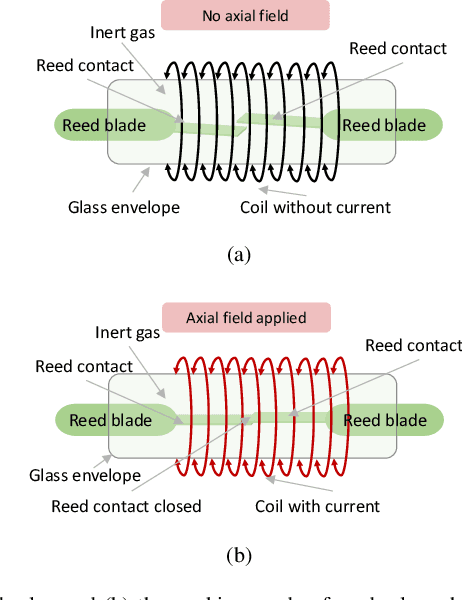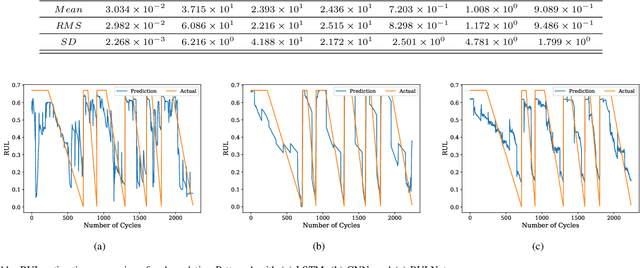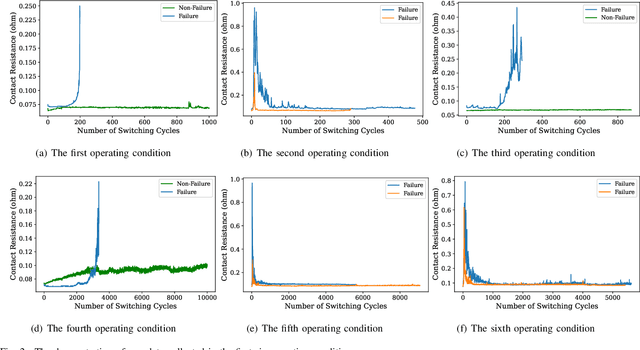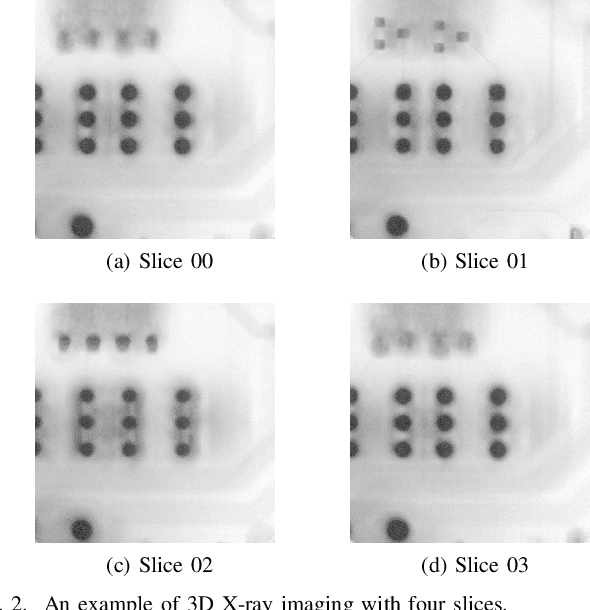Jenny Low
A Hybrid Deep Learning Model-based Remaining Useful Life Estimation for Reed Relay with Degradation Pattern Clustering
Sep 14, 2022



Abstract:Reed relay serves as the fundamental component of functional testing, which closely relates to the successful quality inspection of electronics. To provide accurate remaining useful life (RUL) estimation for reed relay, a hybrid deep learning network with degradation pattern clustering is proposed based on the following three considerations. First, multiple degradation behaviors are observed for reed relay, and hence a dynamic time wrapping-based $K$-means clustering is offered to distinguish degradation patterns from each other. Second, although proper selections of features are of great significance, few studies are available to guide the selection. The proposed method recommends operational rules for easy implementation purposes. Third, a neural network for remaining useful life estimation (RULNet) is proposed to address the weakness of the convolutional neural network (CNN) in capturing temporal information of sequential data, which incorporates temporal correlation ability after high-level feature representation of convolutional operation. In this way, three variants of RULNet are constructed with health indicators, features with self-organizing map, or features with curve fitting. Ultimately, the proposed hybrid model is compared with the typical baseline models, including CNN and long short-term memory network (LSTM), through a practical reed relay dataset with two distinct degradation manners. The results from both degradation cases demonstrate that the proposed method outperforms CNN and LSTM regarding the index root mean squared error.
Deep Learning Based Defect Detection for Solder Joints on Industrial X-Ray Circuit Board Images
Aug 06, 2020



Abstract:Quality control is of vital importance during electronics production. As the methods of producing electronic circuits improve, there is an increasing chance of solder defects during assembling the printed circuit board (PCB). Many technologies have been incorporated for inspecting failed soldering, such as X-ray imaging, optical imaging, and thermal imaging. With some advanced algorithms, the new technologies are expected to control the production quality based on the digital images. However, current algorithms sometimes are not accurate enough to meet the quality control. Specialists are needed to do a follow-up checking. For automated X-ray inspection, joint of interest on the X-ray image is located by region of interest (ROI) and inspected by some algorithms. Some incorrect ROIs deteriorate the inspection algorithm. The high dimension of X-ray images and the varying sizes of image dimensions also challenge the inspection algorithms. On the other hand, recent advances on deep learning shed light on image-based tasks and are competitive to human levels. In this paper, deep learning is incorporated in X-ray imaging based quality control during PCB quality inspection. Two artificial intelligence (AI) based models are proposed and compared for joint defect detection. The noised ROI problem and the varying sizes of imaging dimension problem are addressed. The efficacy of the proposed methods are verified through experimenting on a real-world 3D X-ray dataset. By incorporating the proposed methods, specialist inspection workload is largely saved.
 Add to Chrome
Add to Chrome Add to Firefox
Add to Firefox Add to Edge
Add to Edge